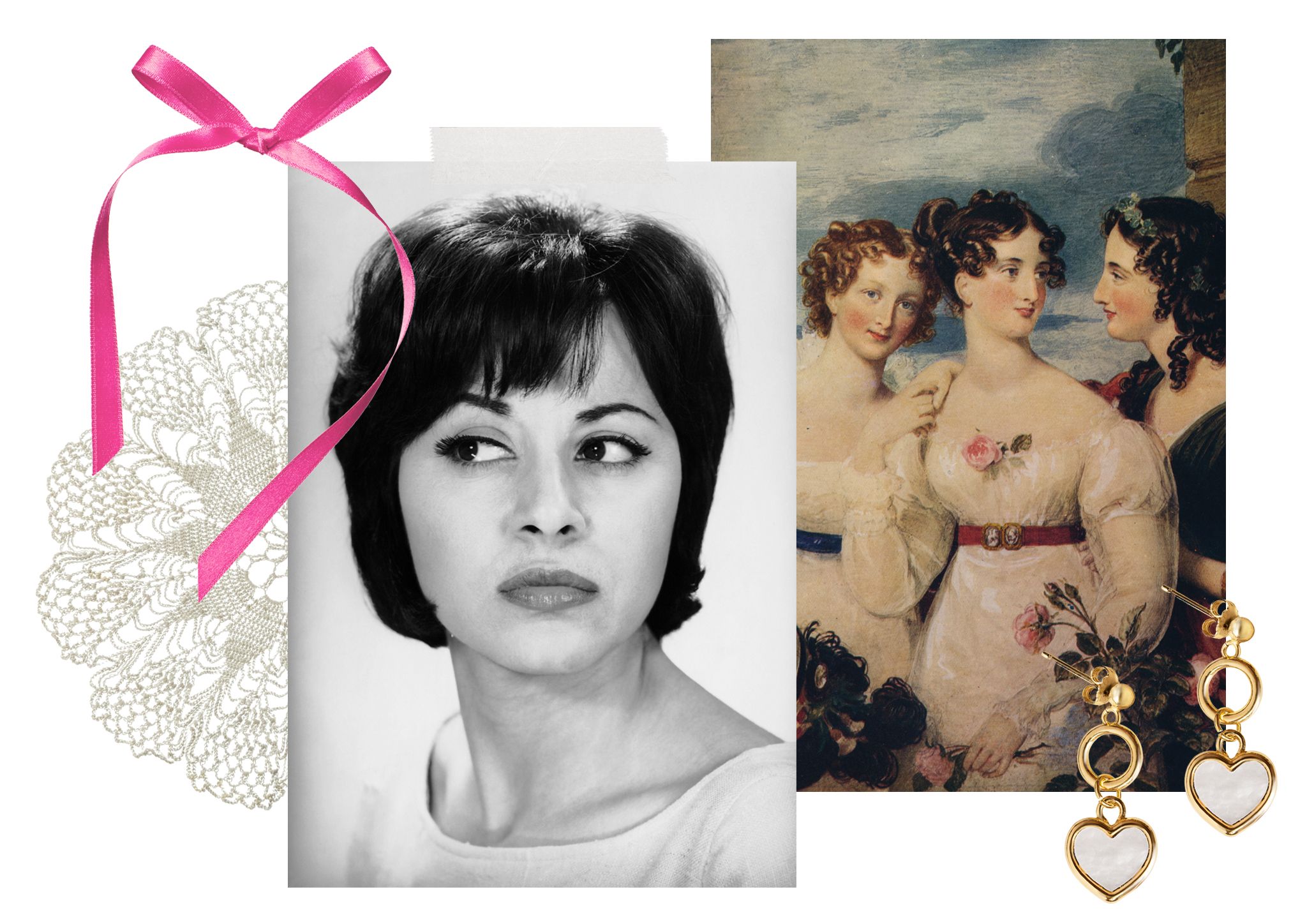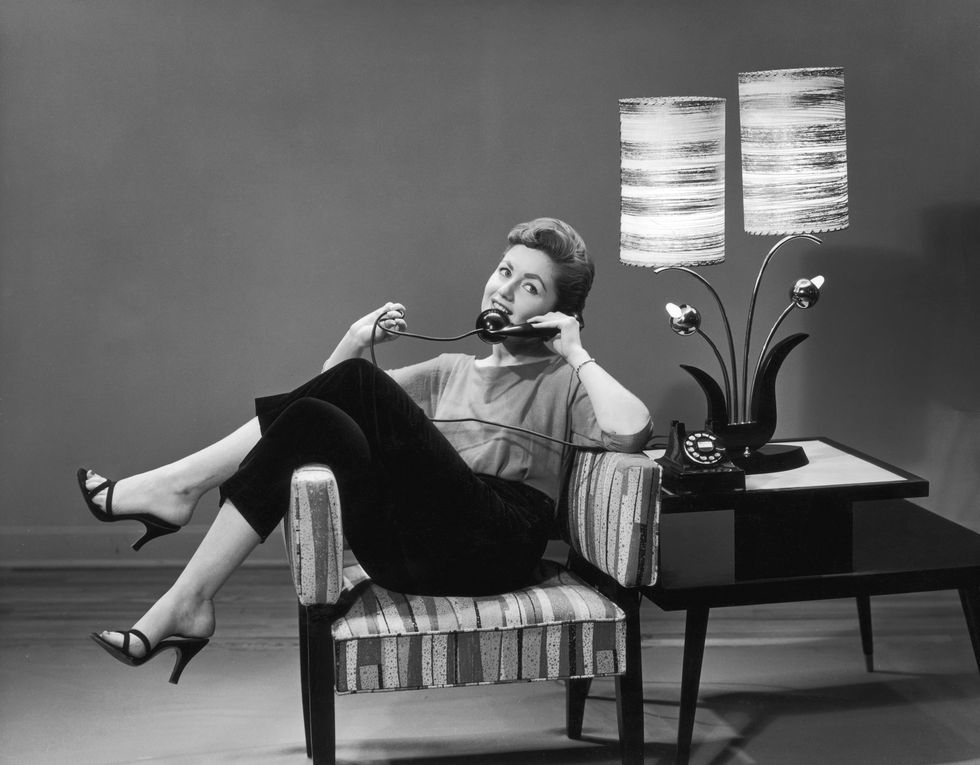Products You May Like
She’s a slut. A homewrecker. She’s basic. She’s a guy’s girl, damaged goods. Oh, she’s asking for it dressed like that. She’s crazy; a lonely spinster; a drama queen. An angry Black woman, a nasty woman. A stupid bitch.
The list of casual everyday insults hurled at and between women and girls is vast; it’s almost impossible to calculate exactly how much our cultural vernacular has been poisoned with misogyny and misogynoir. But within the last year or so, an entirely new insult began to take shape amongst girls, going viral on the internet. It’s manifested everywhere, from public opinion deeming certain women homewreckers without insight into the inner workings of their relationship to even being cross-referenced in the Tate McRae song, “we’re not alike.”
The insult? “She’s not a girl’s girl.”
Almost unanimously, 2023 was declared the year of the girl. Or at least, the year girlhood was sold to us. Insert short-lived -girl trend aesthetic and trendy cultural phenomena here, and then give it a tombstone. Put bows on it, make it Barbie pink, put it in a Stanley Cup, and then add more ribbon and lace. Didn’t you hear? Girls are the box office. They make up a $31 trillion economy. Girls overall, are now more college-educated, and narrowly, single women own more homes than their male counterparts. Young women and girls are responsible for top-grossing tours, and films, and record beauty sales. All while we live in a dissociative post-Roe era.
Girlhood is understood as a personal bildungsroman, legally ending once a girl turns eighteen, but lately, more and more, girlhood is being adapted into something more conceptually expansive and financially potent, especially for young women online who are living through their 20s, 30s, and even past the time of menopause. Girlhood is being collectively celebrated and subsequently mourned by young women as a stage of life that we chronically self-mythologize upon with nostalgia. Especially when we call women girls.
So, what’s a “girl’s girl”? And could this insult be another form of girl-shaming?
“A ‘girl’s girl’ is a girl who prioritizes her female friendships, or she’s more girl oriented—it’s a priority rather than a ‘guy’s girl’ or a ‘pick-me girl’ [who] is the girl who is not like other girls,” says Dr. Kate Phelps, a sociology professor at University of Wisconsin-Madison, and author of a forthcoming book researching digital girlhood. The problematic “pick-me girl” trope (a.k.a. the cool girl monologue from Gone Girl), is a label that reeks of internalized misogyny. The insult “‘she’s not a girl’s girl’ is the latest reiteration of slut-shaming,” Dr. Phelps tells ELLE.com.
It is undeniable how the insult distinguishes said girl as “anti-girl,” while also veiling itself as an all-encompassing term that embraces girl power and sisterhood as a whole. The insult is an oxymoron for how it empowers the plaintiff as a pure pro-girl while disempowering the defendant as a party already proven guilty as a dirty anti-girl. As if there is a perfectly moral girl who exists as a proprietor of intersectional feminism for all. On TikTok, #girlsgirl has garnered over 1.2 billion views and counting and is the ultimate compliment of a perfected female allyship. There’s nothing wrong with girls supporting girls, but there is a component to this particular insult that feels eerily exclusionary, by deeming which kind of girl is allowed access to the sisterhood, depending on what kind of girl she happens to be.
The “girl’s girl” and “guy’s girl” cultural phenomenon is not new, and if we take a walk down memory lane to grade school, these were often identity signifiers used to describe whether a girl was a “girly girl” or a “tomboy.” But it’s problematic when stereotypical gender expressions become a rigid social binary that defines an individual’s ethical character and personality, because it discounts the nuanced complexities that are innate to girlhood altogether. “Girls are quite dangerous. [If they weren’t] we wouldn’t attempt to control them as much as we do through all of these different mechanisms.We wouldn’t try to control their bodies, their behaviors, this idea that their reputation is at stake, or your worth is attached to your body and what you look like. Girls are constantly navigating, and sifting through these competing demands, and trying to figure out who they are,” says Dr. Phelps.
When “she’s not a girl’s girl” is thrown around, it’s used to reference a woman or girl who seems to prioritize male validation at the expense of other women and girls. Frequently, the insult further perpetuates the idea that said girl is “anti-girl” because she will steal your boyfriend, she doesn’t respect boundaries, and she’s looking to compete with you. And in some cases, there really are some girls who put down other girls for male attention; I myself am guilty of participating, and hope there’s repentance for my much younger self who didn’t know better.
But would we ever collectively attribute the same social tag onto young men and boys, and determine “he’s not a boy’s boy” as a judge of individual virtue and a measure of gendered loyalty?
Most recently, in the viral rap feud between Nicki Minaj and Megan Thee Stallion, Minaj has been labeled as “not a girl’s girl,” and a “mean girl,” as she advocates and defends her brother, who was convicted of predatory sexual assault, and husband, a registered sex offender, while simultaneously poking fun at Megan for being a victim of domestic abuse.
There’s a distinctive difference when the phrase labels someone who condones and encourages behavior that puts women and girls at risk within the patriarchy versus labeling someone who simply might not express their girlhood in the stereotypical feminine sense.
The problem is that this difference gets lost in the cultural lexicon, especially in the zeitgeist of social media, when there’s new girl-related vernacular going viral daily. In this seemingly post #MeToo era, girls are the vanguards of online culture. In the “digital epoch that we are existing within, our meanings around who a girl is and what a girl is cannot be separated out from digital culture—they are embedded and constitute each other,” says Dr. Phelps. In an essay for Vox, Rebecca Jennings recognized these very online “-girl” trends as the repackaging of womanhood. She argues that these aren’t trends, but marketing campaigns, where “women on TikTok are…analyzing the data and determining which cute name for an otherwise uninteresting habit or aesthetic has the most likelihood of going viral.” Similarly, what if saying, “she’s not a girl’s girl,” is just the repackaging of internalized misogyny at its worst, and haphazard hashtag female solidarity at its best?
Last year, Sara Youngblood Gregory wrote for Jezebel about The Unsettling Rise of the Anti-Pick Me Girl, writing about the sweeping online critique of the ‘pick-me girl,’ “The critique has morphed so much that it has led to the strange, meta rise of the ‘anti–pick-me’: a girl who insists she is definitely not like other ‘pick-mes’ but still revels in the same put-downs against other women. Except this time, it’s in the name of feminist empowerment rather than male attention.”
It seems the “pick-me” to “anti-pick-me” pipeline is a familiar parallel to the anti-girl critique in the “girl’s girl,” stratosphere. It’s just modified and restyled in how we further brand girlhood to each other with #empowerment while simultaneously punching down on other girls.
“She’s not a girl’s girl,” is a cautionary tale that shrinks the paradoxes of girlhood into a narrow, and limiting moral code. As much as it’s a warning, and expression of support between certain girls (especially in cases where girls are receiving the brunt of internalized misogyny and put downs), it’s become the worst insult for how it can also enable rampant girl-shaming while treating girls as two-dimensional either-or caricatures.
Maybe that’s why Greta Gerwig’s monologues continue to resonate us into tears, as America Fererra put the impossible and contradictory task that’s asked of women and girls in Barbie, “I’m just so tired of watching myself and every single other woman tie herself into knots so that people will like us. And if all of that is also true for a doll just representing women, then I don’t even know.” The “she’s not a girl’s girl” insult is another complicated knot within girlhood, that twists and tangles us together, while also pulling us apart.

Maria Santa Poggi is a freelance writer. Her work has appeared in Vogue, Teen Vogue, Rolling Stone, InStyle, and Harper’s Bazaar, amongst other publications. She currently is an MFA candidate at Sarah Lawrence College.



